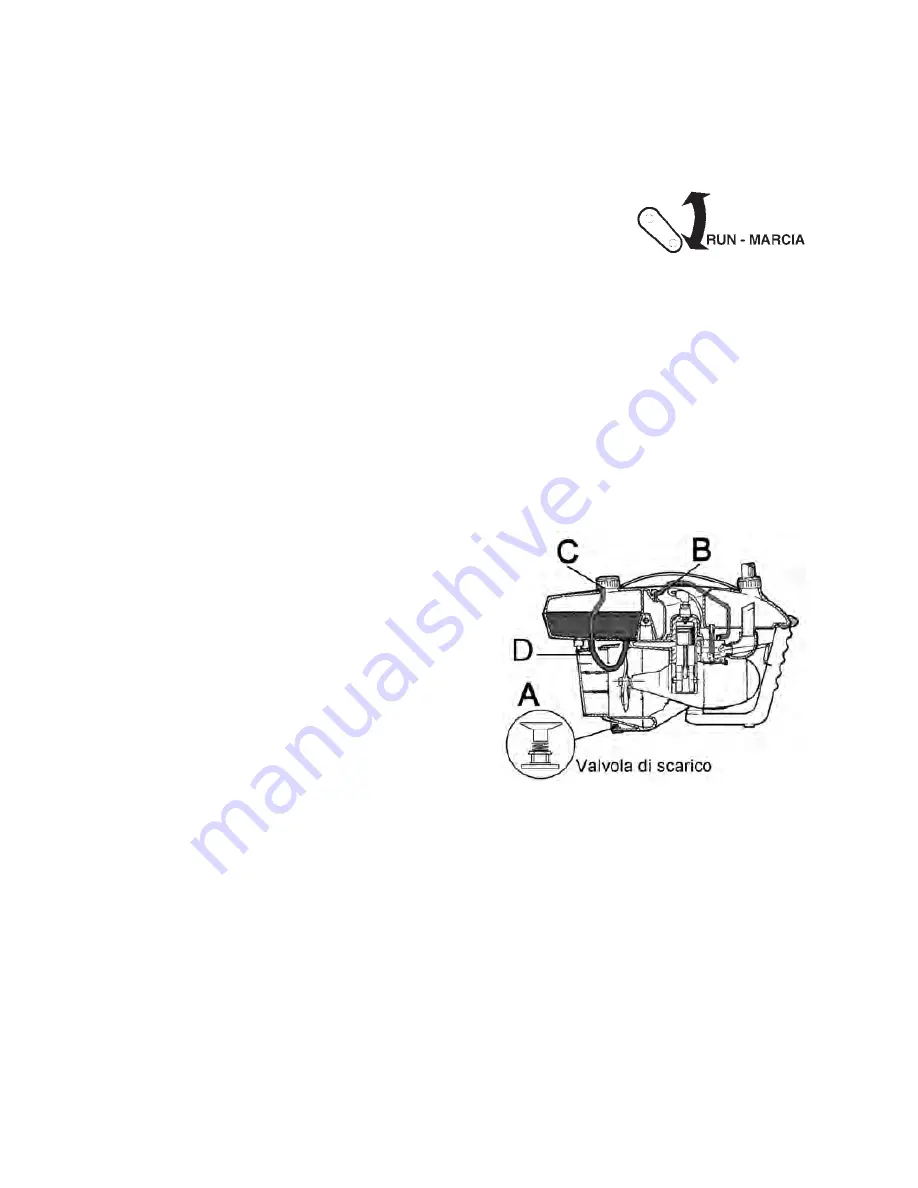
16
- Water in the fuel tank: empty the entire contents of the tank, and replace with
new fuel. Check the carburettor: may contain drops of water.
- Check the plug: it may not have been closed properly, or the plug seal may be
damaged and water may have entered the carburettor (which must be replaced).
- Check that the fuel draw pipe is correctly positioned on the bottom of the tank.
Make sure that the tubes are not broken and that the draw
pipe is not clogged.
- Idling adjustment wrong: follow the procedure (page 13, fig.
7).
B) THE ENGINE STOPS WHEN THE MACHINE IS PLACED IN THE WATER:
1 - If the engine stops when the water reaches the spark plug, a solution is to fill
the inside of the spark plug cap with grease or Vaseline.
Install a new, original spark plug cap as soon as possible.
2 - The throttle valve idling adjuster screw is not adjusted properly: turn clock-
wise.
3 - The engine slows in the water when cruising at full power: is poor power from
the carburettor, turn the H screw anticlockwise for 1/8 of a turn (page13, fig. 7).
OTHERWISE
4 - Light blue breather tube (D, fig. 8) blocked
or full of fuel. Remove from the tank and clean.
5 - Intake elbow clamps loose.
6 - The engine fails to tick over in the water?
7 - Piston worn due to water entering from the
snorkel, the intake union, the exhaust valve or
the fuel tank.
8 - Tank breather. The rubber valve is in the
small internal tube in the fuel tank inlet: check
that it is there and move the internal part with
a pin (C, fig. 8) to allow a small amount of air
to pass through.
- Make sure that the exhaust gas valve is not deformed or flat. If it is, dismantle it
with a screwdriver, start the engine, and then reassemble it or replace it (A, fig. 8).
-
Replace the exhaust valve at least twice a year to prevent water from enter-
ing the engine.
Warning: It is absolutely essential to empty the fuel tank if you send your
Aquascooter away for repairs.
fig.8






































